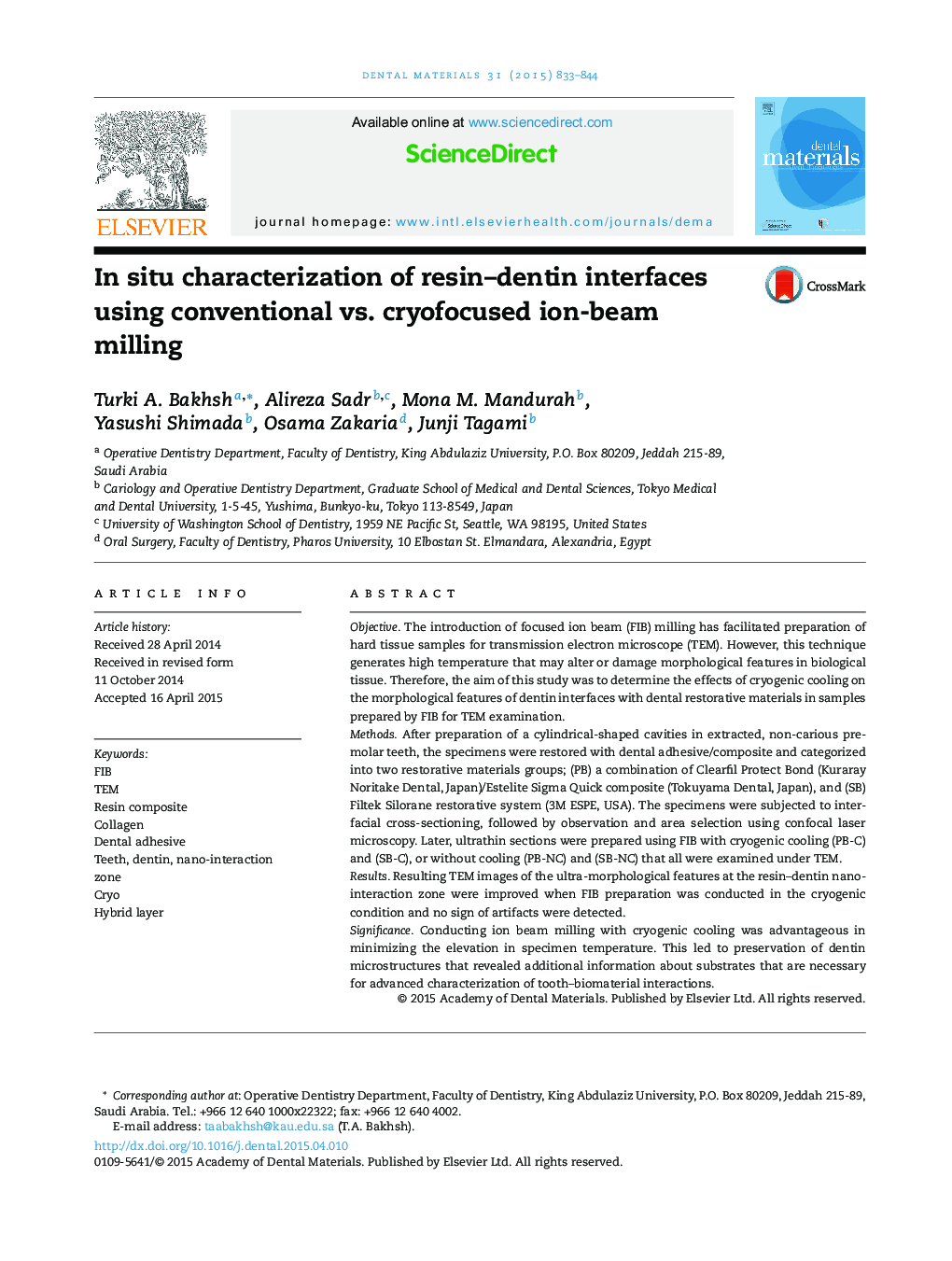| Article ID | Journal | Published Year | Pages | File Type |
|---|---|---|---|---|
| 1420635 | Dental Materials | 2015 | 12 Pages |
•Cryo-FIB specimen preparation for TEM imaging of resin–dentin interfaces is proposed.•We report step by step FIB sample preparations in details.•Minimizing the milling temperature improve collagen fibrils visibility.
ObjectiveThe introduction of focused ion beam (FIB) milling has facilitated preparation of hard tissue samples for transmission electron microscope (TEM). However, this technique generates high temperature that may alter or damage morphological features in biological tissue. Therefore, the aim of this study was to determine the effects of cryogenic cooling on the morphological features of dentin interfaces with dental restorative materials in samples prepared by FIB for TEM examination.MethodsAfter preparation of a cylindrical-shaped cavities in extracted, non-carious premolar teeth, the specimens were restored with dental adhesive/composite and categorized into two restorative materials groups; (PB) a combination of Clearfil Protect Bond (Kuraray Noritake Dental, Japan)/Estelite Sigma Quick composite (Tokuyama Dental, Japan), and (SB) Filtek Silorane restorative system (3M ESPE, USA). The specimens were subjected to interfacial cross-sectioning, followed by observation and area selection using confocal laser microscopy. Later, ultrathin sections were prepared using FIB with cryogenic cooling (PB-C) and (SB-C), or without cooling (PB-NC) and (SB-NC) that all were examined under TEM.ResultsResulting TEM images of the ultra-morphological features at the resin–dentin nano-interaction zone were improved when FIB preparation was conducted in the cryogenic condition and no sign of artifacts were detected.SignificanceConducting ion beam milling with cryogenic cooling was advantageous in minimizing the elevation in specimen temperature. This led to preservation of dentin microstructures that revealed additional information about substrates that are necessary for advanced characterization of tooth–biomaterial interactions.
